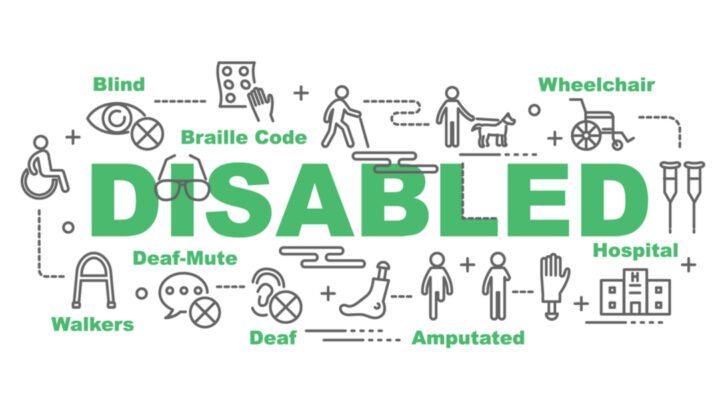Some occupations require workers to perform tasks involving liquids. Some occupations involve workers immersing their hands in liquids throughout the day. This exposure to liquid is referred to in literature and in occupational studies as “Wet Work.”
“Wet Work” Exposure encompasses activities of frequent contact with liquids. This “Wet Work” Exposure can lead to the development of Skin Disorders. Since these activities are work-related, the Injured Worker suffering from “wet work” skin disorder can make a workers’ compensation claim. A workers’ compensation claim may entitle the Injured Worker to obtain monetary disability benefits, medical treatment, and vocational retraining.
Occupational Skin Disorders constitute a large portion of work injuries. They rank only second to musculoskeletal disorders. They represent greater than 45 percent of occupational illnesses. Wet-work Exposure: A Main Risk Factor for Occupational Hand Dermatitis Ali Behroozy1 Tessa G. Keegel https://doi.org/10.1016/j.shaw.2014.08.001 Contact Dermatitis makes up 80 percent of all occupational skin disorders. Supra.
This article will discuss “Wet-Work,” industrial “Wet Work” Skin Disorders, Occupations that are at risk for “Wet Work” Skin Disorders , and Permanent Disability as a result of such “Wet Work” Skin Disorders.
What Is Wet Work?
Wet Work becomes a problem with respect to Worker’s skin when there is significant frequency and duration of activities that involve liquids. Researchers have defined the criteria as to how much frequency and duration constitutes “Wet Work.” Wet-Work has been “defined as activities where workers have to immerse their hands in liquids for >2 hours per shift, or wear waterproof (occlusive) gloves for a corresponding amount of time, or wash their hands >20 times per shift.” Supra.
How Is Wet Work Harmful to Workers?
Long or repeated exposure to water, along with the simultaneous effects of washing and cleaning agents, disenfectants, solvents, alkalis, and acids can damage the barrier properties of stratum corneum and underlying skin layers (living epidermis). Working with gloves also can cause injury as well to the skin. Supra.
In sum, liquid exposure essentially compromises the dermis. This can lead to irritation of the skin. This irritation can continue to fester if the acts of performing “Wet Work” continued. This continued irritation can lead to skin diseases and disorders.
Also, implicated within “Wet Work” is not only the use of the liquids. The frequently drying off the hands is also part of the harmful process to the skin.
What Skin Conditions Can Arise from “Wet Work?”
There are a variety of Skin Conditions that can arise from “Wet Work.” They include Acneiform Dermatitis, Allergic Contact Dermatitis, Cumulative Irritant Dermatitis, Eczema, Frictional Dermatitis, Hyperkeratotic Hand Dermatitis, Irritant Contact Dermatitis, Maceration, Pustular Dermatitis, and Traumatic Irritant Contact Dermatitis.
Contact Dermatitis, the AMA Guide for Rating Permanent Impairment, 5th Edition, describes the condition as an “inflammatory skin reaction induced by exposure to an external agent and is the most frequent cause of occupational skin disease.” It notes that the two common types of contact dermatitis is irritant which is 80 percent of the cases. This represents direct tissue damage. The Allergic Contact Dermatitis involves delayed cellular hypersensitivity.
There are many substances that can irritate with respect to being an allergen agent Per the AMA Guides, it is noted that “[m]any cutaneous allergens, such as chromates, nickel salts, epoxy resins, and preservatives, are also primary irritants. Allergy can be induced or maintained by chemicals in concentrations insufficient to irritate nonallergic skin. Allergen
cross-sensitivity is an important phenomenon in which an individual who is allergic to one chemical (eg, urushiol in poison ivy or poison oak) also will react to structurally related chemicals (eg, in Japanese lacquer, mango, and cashew nutshell oil).”
What Occupations Engage in Wet Work?
There are many occupations that involve “Wet Work.” This includes agriculture, beautician services, catering, construction, dish washing, domestic workers, engine serving, flower arranging, food preparation and processing, hairdressing, healthcare workers, household cleaning, leather work, machine tool operation, manufacturing, metal machining, metal plating, metal treatment, metal work, nursing, painting, and printing.
Do “Wet Work” Injuries Translate Into Permanent Disability?
Yes.
The AMA Guides for Rating Permanent Impairment, 5th Edition, notes that the “[a]ccurate diagnosis is the key to proper management of contact dermatitis. If the specific agent(s) can be identified … and successfully avoided, full recovery usually is anticipated; but if contact continues, the dermatitis may become chronic and disabling, and it may prevent the individual from performing some activities of daily living.” AMA Guides at P. 177. [emphasis added]
The concept of “Wet Work” injuries resulting permanent disability is longstanding within California Workers’ Compensation Law. Prior to the adoption of the AMA Guides to determine impairment, the 1997 Schedule for Rating Permanent Disabilities Under the Provisions of the Labor Code Section of the State of California, 1997, provided for a permanent disability relating to “wet work.” At the time, permanent disability was rated by actual or prophylactic work restrictions. In the Schedule, under the Skin Condition Section, 6.2, there was work restriction “Precluding Wet Work.” It was defined as a restriction that “contemplate[d] [that] the individual must avoid more than incidental contact with water, and/or other liquids provide for a 25% standard disability. Page 2-6. Note: This illustrates that Workers’ Compensation Law recognized the value the ability of an Individual to be able to perform “wet work” activities in the open labor market.
Under the current law, the AMA Guides apply. Under the current Rating Schedule, the AMA Guides for Rating Permanent impairment, 5th Edition, on P. 178, has a table that can be used to address a skin impairment caused by “wet work.” There is a table which is entitled the “Criteria for Rating Permanent Impairment Due to Skin Disorders,” Table 8-2, which is one table that can apply to assigning whole person impairment to “wet work” skin injuries.
Under the AMA Guides, Table 8-2, the table requires the evaluating physician will look at three items of import. First, the presence of skin disorder signs and symptoms, second, the effect that the skin disorder has on the performance of activities of daily living, and third, the need for treatment in terms of nature, extent and duration.
In sum, permanent disability, for these skin conditions, will be assessed on an individual basis. Generally speaking, a Physician who specialized in Dermatology should be making the assessment.
What If I Need Legal Advice?
If you would like a free consultation concerning any workers’ compensation case, please contact the Law Offices of Edward J. Singer, a Professional Law Corporation. They have been helping people in Central and Southern California deal with their worker’s compensation cases for 28 years. Contact us today for more information. Click Here.




